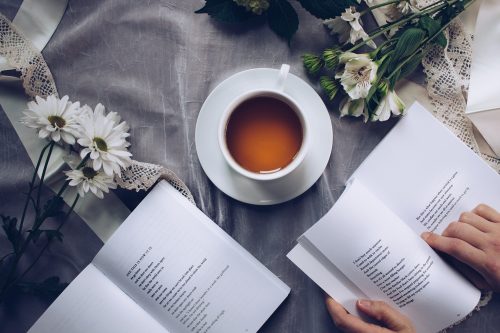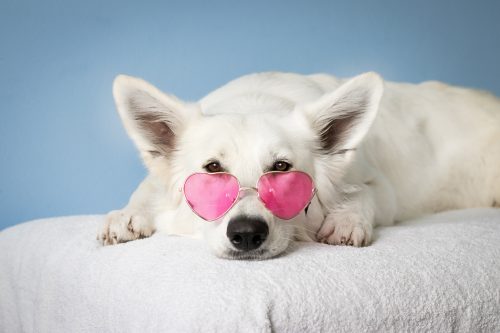“Killing yourself slowly is still killing yourself. Wanting to die is not the same as wanting to come home. Recovery is hard work. Not wanting to die is hard work.” This is the most famous quote from feminist poet Blythe Baird’s book, Give Me A God I Can Relate To.

In the Spoken Poetry industry, Blythe has left her mark as an influential spoken word poet. She was the youngest competitor in the National Poetry Slam in 2014. Her poetry collection discusses many issues, like eating disorders, mental health, feminism, gender and expression, and a lot more. Many of her poems are based on her experiences, like her suffering from ED and depression. To Blythe, poetry has greatly served as an outlet for her feelings of frustration, ideas, and struggles.
Blythe is an example of how art has become highly beneficial to people with mental health illnesses. Numerous findings have yielded promising results on the cognitive effect of creative expression. People find an outlet with art. It allows them to explore their creative soul, use their imagination, and improve their self-esteem. Because of these, art has become an integral part of mental health treatment approaches, even as simple as displaying family photos at home.
Art can take many forms. Blythe chose poetry. But you can also take up other forms such as painting, sculpting, pottery, digital art, theater, photography, and even music. If you are currently receiving counseling or online therapy, you can raise the idea of complementing your talk therapy sessions with art therapy.
How Photography Helps With Mental Health Recovery
One of the most popular creative activities many counselors recommend nowadays is photography. A lot already do it because we live in the digital age, and it’s more common. Many people have it as a hobby, a pastime activity. Some work as photographers. But some use photography for its therapeutic benefits.

Photography is defined as the art of creating pictures with the use of a camera. With new technology emerging here and there, it is relatively easy for people to take photos. Back in the day, the most commonly used tool for photography was film cameras. But now, there are hundreds of different digital cameras readily available, including mirrorless cameras and sports action cameras. Even smartphones offer the convenience of having a camera feature for immediate photo-taking.
It may seem counterintuitive for your counselor to advise you to spend more of your time in front of your phone or camera, but research tells otherwise. Photography will allow you to maximize your time outdoors, finding hidden gems, exploring exciting things and interesting places. Spending your days out will significantly improve your psychological well-being as the sun is a natural mood booster. If you visit amazing sites and move around a lot, it will also serve as a physical exercise for you.
Through therapeutic photography, you may also experience self-discovery, which is essential for your psychological welfare. You can render your thoughts and feelings in the form of pictures when words fail you. It is a healthy outlet to release your pent-up emotions and instead create meaningful art. There is a literal emotional release that helps you with stress relief as well.
Science also backs up studies suggesting how making art, like taking photos or drawing, can trigger your brain to release dopamine. Dopamine is a neurochemical often referred to as the “pleasure hormone.” Once dopamine is released into our body, it makes us feel happier.
Different Types Of Photography You May Try
There are different types of photography therapy you can experiment with during your counseling. These varying types mainly depend on the subject being photographed, which you can relate to or help you relax.
Portrait Photography
Self-portraits, headshots, and pictures where the individual’s or group’s emotions are captured fall under portrait photography. It is one of the most popular types of photographs. Many people love portraiture as it shows raw emotion, focusing on the eyes. As they say, eyes are windows to the soul. It may be a good choice for you if you have a hard time showing your feelings.
Pet Photography
From the name itself, pet photography’s subject is pets. This type of photography may be ideal for you if you love pets. Animals are a big help in many people’s mental recovery. Animals are used in animal therapy—another well-known type of therapy available for mental disorders.

Food Photography
Some mental health sufferers turn to food for stress relief. Turning the stress eating into food photography is like hitting two birds with one stone.
Adventure Photography
The great outdoors is waiting for you to explore it. Going on an adventure will undoubtedly be great for your mental health. You can also meet people to go on a venture together. Having adventures and exploring the outdoors can give you a sense of freedom and openness to the world. It can also boost your social confidence, which would help your psychological well-being immensely. It would be best if you have as much fun and sun as you can. So double up your travels by doing photography.
Ocean Photography
Perhaps seascape or ocean photography is what most people with mental illness will consider. The sea is already calming on its own, only watching the waves rise and fall. But with photography, you can explore the ocean so much more while also helping yourself mentally recover. You can also try sea diving and capture photos of marine life, such as corals and sea turtles.
Landscape Photography
Landscape photography is the opposite of ocean photography. From the name itself, the main focus of this type of photography is capturing lands. Like bodies of water, bodies of land appear calming to some people too.
Conclusion
You do not necessarily have to be good with arts to enjoy its benefits. Art is subjective. If you feel what you are creating is art, no one should tell you otherwise. Doing things that provide tranquility and clarity of mind can be very beneficial for your mental well-being.
Wait no further. Go forth and create art, whether through photography or not. Find an artistic outlet, relieve your feelings, and try to eliminate emotional roadblocks. Who knows? You might have a knack for creativity and discover a hidden talent of yours.
